Becoming physically fit after age 50 is more challenging than getting into shape at age 30. Here are ten effective methods for becoming more physically fit – that you can get started on immediately. See the video located lower within this article for extra motivation.
Getting into Fantastic Shape as a Mature Adult
What would it be like if you were an even stronger person than you are right now – mentally, emotionally, and physically?
Would being stronger create more positive outcomes in your daily life?
The protocols for getting your physique in tip-top condition are, in some ways, counterintuitive – especially in post-midlife.
I’ve crafted this list with each method cleanly separated into one core concept and one action step.
I chose these specifically for their usefulness and because they are discussed less often than other self-improvement techniques.
1. Track Your Hydration to Become More Physically Fit
Core Concept: Almost everyone underestimates their average intake of daily water.
Action Step: To help support you in your goal of becoming more physically fit, verify your ideal water intake using an online water calculator – and then carefully track how much you drink on a typical day.
Keep in mind that proper hydration includes trace minerals, including salt. If you exercise intensely, especially in warm weather, mineral supplementation might be warranted.

2. Look How You Feel
Core Concept: Taking care of your skin is more than just cosmetic.
Action Step: Moisturize the sensitive tissues of your face and neck immediately after waking in the morning, even if you’re just going to shower it off an hour later.
We tend to think of grooming as an exclusively cosmetic endeavor but, in fact, our skin is one of our most vital organs and its maintenance is extremely important. Good skin is a part of being physically fit.
If you’re reading this and you happen to be under age 50, this might not resonate with you strongly. But one day (hopefully) you will be over 50, and this will impact you greatly.
Everything we do when we’re younger – every habit, every virtue, every vice – eventually shows up on our skin as we age.
I don’t mean wrinkles and silver hair – as far as I’m concerned, wrinkles and silver hair are attractive signs of wisdom.
I actually like my wrinkles and silver hair – I feel like I earned them and that they are, in a sense, badges of honor.
One thing about being over age fifty that is peculiar and that I don’t like is the rare moment when I feel fit and energized on the inside, but when I look in the mirror, I appear tired.
Incongruence can be irksome and unsettling. These are the moments to dial up the grooming regimen.
It’s helpful for our psyches and our daily motivation when we look on the outside how we actually feel on the inside.
What I’m talking about is our body’s ability to heal its own skin – how it maintains and repairs the texture and quality of the skin itself.
One of the most often missed grooming opportunities is that window of time between when a person wakes up in the morning – and when they shower and dress.
Everyone already knows to groom after their shower – to organize their hair and apply some sunscreen to the face, etc. But what many people still don’t realize is that that moment they first wake up is a prime hydration opportunity.
As soon as you roll out of bed, you can slather moisturizer all over your face (including your ears and neck, including the entire back of your neck), and you don’t have to worry that it’s too much or will clog the pores – because you’re just going to clean it off in the shower in 1 or 2 hours anyway.
This is particularly important for the delicate tissue under your eyes, which dehydrates overnight. You don’t need to use an expensive product, either – just something natural and without petroleum-based ingredients.
This little grooming trick will help to create congruence: it can take years off of your appearance so that you can look how you feel.
3. Check-In with Your Adrenals
Core Concept: Adrenal health is an important component of wellness.
Action Step: Bolster your body’s endocrine system by reducing stimulants – especially caffeine, sugar, and stress.
Basically, our adrenal glands run the show. Hormones are what our bodies use to communicate between vital organs and processes – and adrenals are what regulate those hormones.
I invite you to monitor your stimulants. Stimulants can tax your body’s adrenals. Three of the most common stimulants are stress, sugar and caffeine, so, in particular, keep a close eye today on your stress levels and your caffeine and sugar intake.
If you were to reduce these daily stimulants by even just 10%, the overall positive impact on your health, over time, could be exponential. Healthier adrenals are a key part of becoming more physically fit.
4. Develop New Hand Habits (How Not to Get Sick)
Hand sanitizers are nice, but it’s impossible to sanitize your hands often enough to keep the germs off of your fingers. You open more doors and cupboards, turn more faucets, type on more keyboards, and hold more pens and electronic devices than you realize. You can solve the issue by simply not touching your face.
Core Concept: The more you touch your face, the more often you will get sick. Germs love to enter your body via the moist entry points of your head: your eyes, ears, mouth, and – especially – your nose.
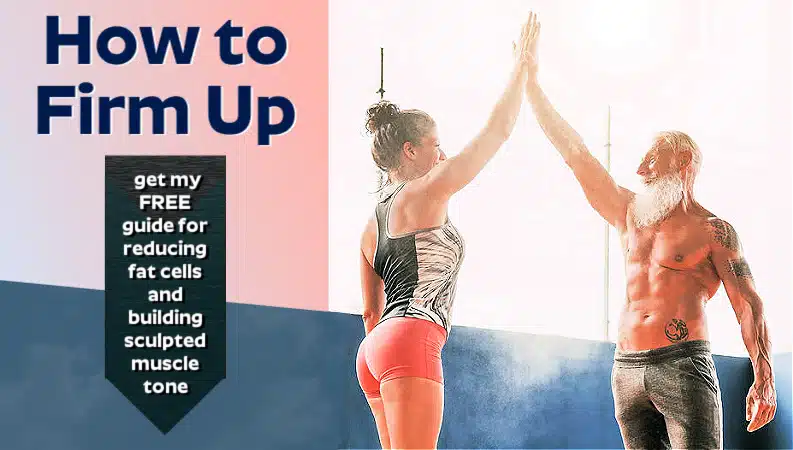
Action Step: Train yourself to stop touching your face (unless your hands have just been sterilized) by noticing how often throughout the day you actually do.
No strategy for taking your health to the next level would be complete without addressing how to stop getting colds and flu.
Many modern citizens are now in the habit of getting a cold or flu at least once a year. We’ve come to think of this as normal and expected.
In fact, you do not have to get colds and flu, and certainly not as often as once a year.
The nutritional and exercise improvements that you’re making will likely bolster your immune system so that you are less susceptible to germs and viruses. However, one of the easiest ways to prevent catching colds and flu is to simply train yourself to stop touching your face.
Most people touch their own faces far more often than they realize – they do it reflexively and absent-mindedly.
The good news is that if you set a firm intention, it’s fairly easy to train yourself to never touch your face unless your hands are sterile.
I invite you to engage your excellent judgment before you reach into the Red Vines candy tub in the office break-room or into the sample cheese platter at the grocery store (true story: I once saw an elderly woman put a cube of cheese onto her tongue, then change her mind, return the cube to the sample tray in order to exchange it for a larger cheese cube).
A lot of buffets and sampling trays at stores and restaurants are at nose level with children. I’ve seen children sneeze, cough, talk, and breathe onto food that is just inches from their mouth because their height positions them perfectly underneath the “sneeze guard.”
By the way, 95% of the people who do wash their hands do not do it effectively. Don’t believe me? Start noticing. You’ll quickly see what I mean.
Hand-washing is only effective when it happens for a long enough duration (at least 20 seconds, according to the Centers for Disease Control) and if it’s comprehensive enough (massaging a bit of that soap into the nail beds, the tops of the hands, and in between the fingers – not just the palms).
Of course, intellectually, everyone already knows to wash their hands and not touch their face. But what people underestimate is the extent to which these habits, when done properly and consistently, can positively impact their body on its way to becoming more physically fit.
Improvements in hand-washing habits correlate with a decrease in illness.
Today’s action step is simple. Increase your awareness about your own hands throughout the rest of the day – how long you wash them, how often, and how thoroughly.
Most importantly: notice when, where, and how often you touch your face.
Germs and viruses find easy access into your body via the openings on your face – your eyes, nose, ear, and mouth.
5. To Become Physically Fit, Craft Your Quotidian
Core Concept: Improved self-care requires time from your schedule. As crazy-busy as your own life might sometimes feel, the truth is that there is almost always enough time each week to do everything you want to do. A bit of good planning makes all the difference.
Action Step: Create a daily checklist that includes the tasks that you are most tempted to forget to do.
6. See Sugar Differently
Core Concept: Reducing your daily intake of sugar will help you to experience one of the most positive changes possible to your long-term health.
Action Step: Increase your daily awareness about the number of carbs – both simple and complex – that you typically consume. Experiment with replacing some of the carbohydrates in your typical day with healthy fats instead to see if it improves how you feel and the appearance of your skin.
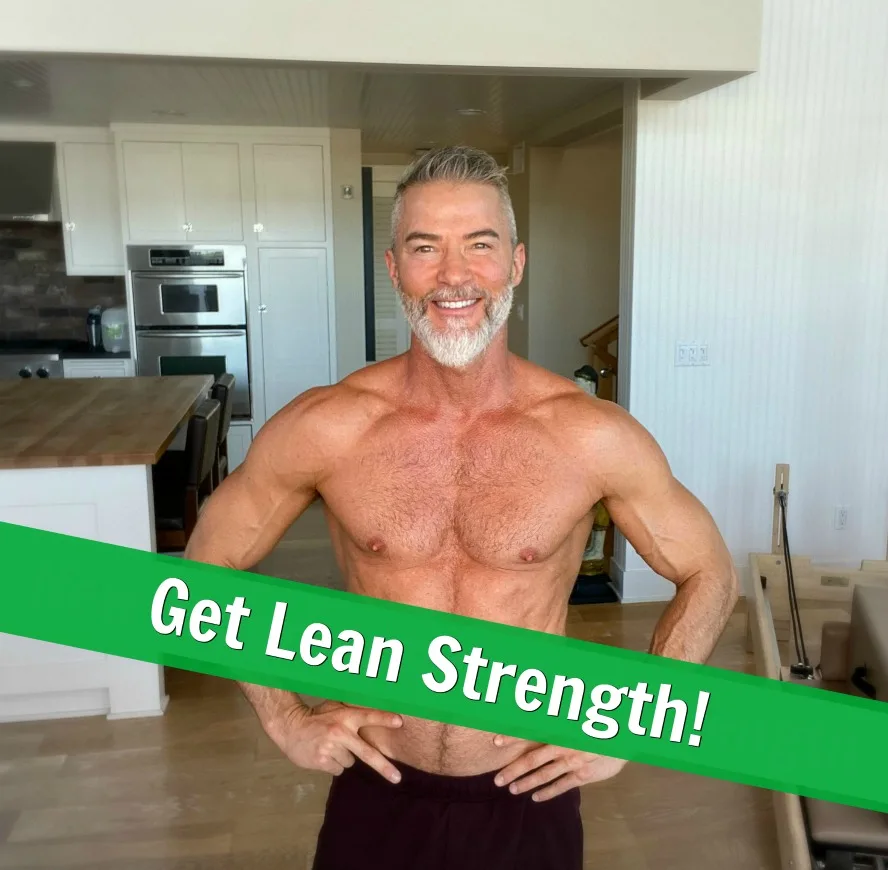
Lowering simple carbs while simultaneously upping healthy fats can be among the most impactful new habits helping you become more physically fit quickly. Ask your medical doctor, nutritionist, or naturopath about this.
7. Do Menu Mapping to Become More Physically Fit
Core Concept: having already done your calorie research and having experimented with decreasing your sugar intake, it will now be helpful for you to create a “typical day’s menu” that includes hydration and snacks and meals in their ideal sequence.
Action Step: Create your menu map as a sort of template of an ideal day – that you can easily refer to – to help you stay focused and on track with your new positive daily lifestyle habits.
Continue to improve your nutrition based on the unique needs and signals from your own body. Map out a typical day of eating and drinking, and now is your opportunity to really fine-tune it and make it as good as you can so you can truly become more physically fit.
I keep my “map” both on my laptop and taped to the inside of our kitchen cupboard – this way, no matter if I’m out in the field or working from the home office, I can quickly access my map in case I forget where I left off. You don’t have to follow it exactly every day (it’s good to rotate your food choices), but it’s helpful to know what a “perfect” day of eating and drinking might look like and also the ideal sequence.
Here are some details about my own map that you might find interesting or useful:
- my calories each day will usually add up to not-under 2,100 calories, and not above 2,400 calories – but it ultimately depends on my activity level and what I’m working on that particular day – losing fat, gaining muscle, or maintaining the current ratio.
- where my map says “latté” it doesn’t mean a latté as you get at the corporate coffee chain. This is a latté that has been meticulously designed to provide my body with quality protein, healthy fats, and other nourishing ingredients.
- I have a robust hydration strategy. I actually plan on when I’m going to drink my fluids throughout the day; as someone who is frequently moving my body and lives in a year-round warm and dry climate, it’s astoundingly easy to become dehydrated.
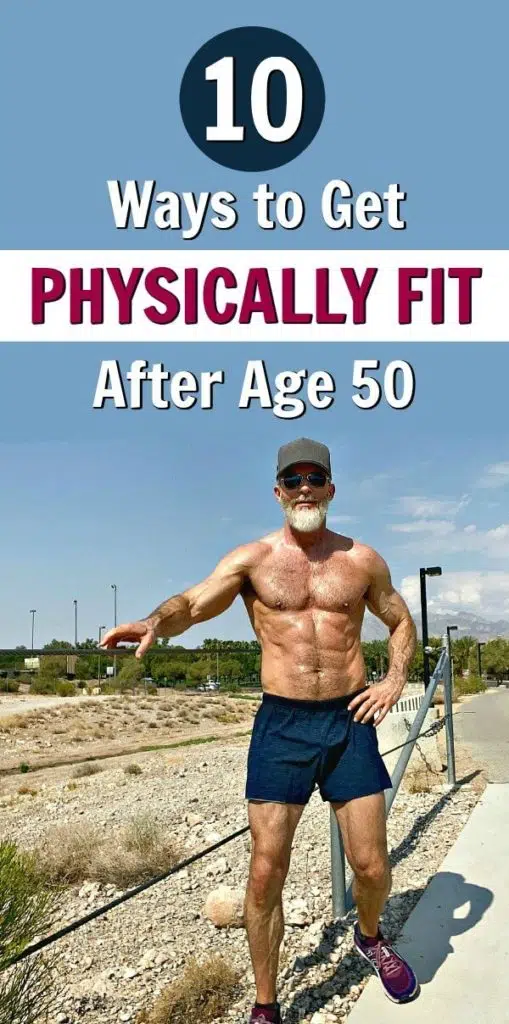
- I’m careful to rinse my teeth with water or chew natural gum after I have my lemon water or apple cider vinegar water (to prevent the acids from eroding my tooth enamel).
- whether I’m working out at home or at the gym, I make certain to have a post-workout green drink with me to immediately nourish my thirsty muscles during that time window when it will have the most positive impact. Worked-out muscles are like dry sponges, they will absorb nourishment beautifully if you feed them at the right time.
- the traditional 3-meals-a-day eating method that most people follow in our modern culture no longer works for me; I have smaller meals throughout the day to keep my blood sugar sustained at sane levels (with a minimum of dips and surges), and my metabolism fired up.
8. Eat 15% More Raw Foods
Trends come and go in the world of gourmet food. I remember in the late ’80s when fats were “out” and carbs were “in.” Almost every magazine on the shelves was extolling the virtues of a high-pasta diet (that seems so funny now, but it really was the case back then).
A decade later, high-protein was all the rage. Carbs were considered a necessary evil, best indulged in the smallest amounts possible.
This brings us to today, a time in which diets are more balanced but no less extreme. What’s in style now are food regimens that are more primal, emphasizing more fresh fare like our ancestors ate and less “conveyor belt” foods from the industrial age.
Among the currently popular lifestyle diets for becoming physically fit are Paleo and Raw Food.
It might seem that these diets are complete opposites since Paleo is heavy on meat, while Raw Food is often considered a vegan undertaking. However, these two diets actually have meal plans with much in common. Namely, they emphasize the virtues of vegetables.
The raw food regimen is not a weight-loss diet.
Yes, one usually drops a great deal of body fat when eating an all-raw diet, but the primary purpose of raw food is to improve health and vitality – fat loss is just an added perk.
Technically, the raw food regimen is a way of eating that emphasizes plants and that limits food choices to those that are uncooked – or at least not exposed to temperatures of over 104° F (or 40° C).
There is no one way to follow a raw food diet:
- some raw-fooders are fully committed and do 100% raw, believing that all plant-based foods are healthier – with their complete enzymes intact – uncooked
- other health enthusiasts believe that a mostly raw food diet is the way to go, and shoot for a 70% intake or above (there has been some talk that while most vegetables are better raw, there are a few vegetables that might have a broader nutritional spectrum when slightly cooked)
There are even more subsets within the raw food community:
- including those who eat all-raw but include raw meat (such as our ancestors ate before the era of agriculture – this is another place where the raw food diet and Paleo diet converge a bit)
- the spiritually inspired health-conscious who believe uncooked foods have a quality that is unquantifiable in a lab test: namely, an abundance of “prana,” or lifeforce
- there are even raw-fooders who drink red wine!
Adopting improved nutritional habits for becoming more physically fit can be tricky, at least at first. Here are some tips that might help make experimenting with raw foods an easier, and more enjoyable, process:
Identify a Primary Goal
Your chief aim is probably going to be something like “to become more physically fit by gradually increasing the number of uncooked plants in my daily diet.”
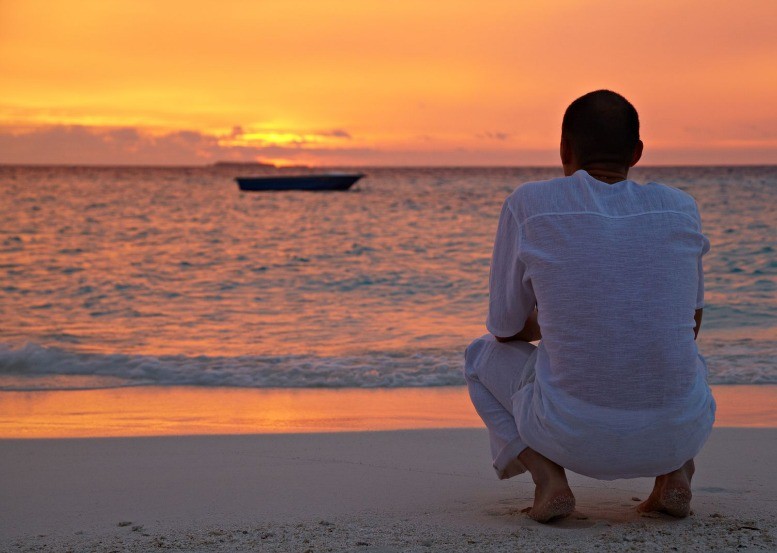
Make Outrageous Salads
Each night, experiment with making the most amazing salads you can. Include your favorite vegetables and lettuces, but also try varieties you’ve never before considered. Top off with microgreens (such as sunflower sprouts) and raw, sprouted nuts and seeds.
Get into Green Smoothies
Get yourself an excellent blender and discover the delicious and energizing effects of freshly made green smoothies. Your first few shakes might be a near-disaster, but with a little patience (and a sense of adventure) you can make the best green smoothies ever and use that improved nutrition as one of your strategies for becoming more physically fit.
Listen Closely to What Your Body Tells You
I believe that, often, our bodies will give us the information we need to make good choices if only we will listen. If you have a sensitivity (or an allergy) to any particular food, your body will often tell you. It can be helpful to determine: did your energy drop, or go up, after you ate?
Give Your Body Time to Acclimate to the Increase in Fiber
Depending on how optimized your intestinal flora is already – with good probiotics and such – your body may take a bit of time to get used to the uptake of fiber in your daily diet. Your stomach may grumble a bit at first. As you get healthier, however, you will eventually become far less gassy than you were before the dietary increase in living raw foods.
9. Helping Your Feet Become Healthier Is an Important Part of Becoming Physically Fit
One of the best places you can begin to improve your physical body is your feet.
That’s right, your feet.
Just as a home is only as well-built as its foundation, a body’s overall health is built upon the health of its feet.
In fact, I once had a mentor – an amazing teacher – who used to ask me, “where are your feet right now?”
It was a trick he used to help me move into the most present and soulful part of myself:
- I would take a quiet moment and, with eyes closed, wiggle my toes inside my shoes – then bring attention to the soles of my feet touching the ground.
- Visualizing the connection to the earth I would let any anxious feelings flow down through my feet and let them be absorbed by the earth.
- next, I reversed the direction of energy and visualized nourishment coming up through my feet into my body – much the way that roots help to hydrate a tree. (It really works – I invite you to try it.)
But the pivotal role that feet play in your health is more than an energy thing, it’s bio-mechanical.
When your feet are strong, supple, and centered, your musculature and nervous system (including your spine) can align properly. This, in turn, impacts the health of your joints and back.
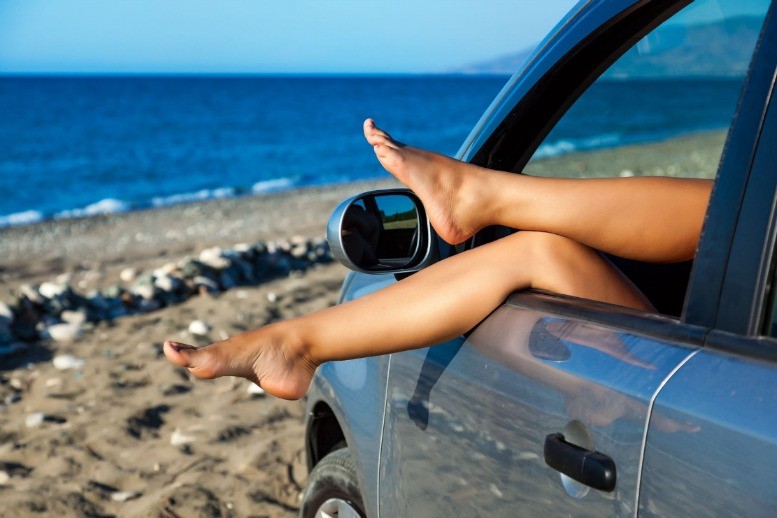
Keep your knees strong! If you want your knees to last at least 80 years, then pay attention to your feet. Keeping your feet happy and healthy now will help you avoid pain in the future.
Action Step: Today, notice what your own feet do when you walk, sit, and stand:
- when you walk, do your feet point directly forward, or do they turn a bit (“duck”), or in a bit “pigeon”)?
- when you stand, do you roll to the inside, or outside, of your feet – or is the weight evenly distributed?
- when you sit, what do your feet do – flat on the floor, or crossed and tucked under?
I invite you to experiment with subtly switching the positioning of your feet into a more parallel positioning, with body weight more evenly distributed on the soles of the feet and your knees slightly soft (instead of locked).
Though it will certainly feel unfamiliar to experiment in this way, the idea is to determine if playing with the positioning of your feet helps your physique to become more physically fit and to feel more poised.
10. Trick Your Body’s Adaptability
The body adapts quickly to favorite forms of exercise. The way to keep getting into better and better shape is to frustrate your own metabolism’s attempt to adapt. Been a powerlifter for 30 years? Take a yoga class! Doing yoga for 30 years? Take a powerlifting class!
I’m actually considering taking up swimming at our local university pool, not because I love swimming but because I never swim, and I know my body would become highly responsive if I started doing it twice a week.
What’s Next in Your Journey Toward Becoming Physically Fit?
Becoming physically fit after age 50 involves more than just doing bicep curls. It involves looking at your body as a holistic system in which all of its parts are related.
The more effectively and consistently that you integrate small, healthy habits into your lifestyle, the more physically fit you will become.
Over 50? My free weekly updates often include exercise ideas, goal-specific workouts, and diet plans.
I strongly encourage you to subscribe to my free updates now so that when you wake up tomorrow morning, a motivational message will be waiting in your inbox. It includes an easy action step you can complete to help yourself feel better, look better, and become more physically fit. Part of self-improvement is learning how to better manage your personal energy.
Even just one of these small steps could create a permanent improvement in your physical and emotional energy – imagine if you fully installed all of them within your typical weekly routine?
Small action steps will help you significantly in your continued quest to improve your health. With the right tools and methodology, you can turn the dial up on the joy, meaning, and purpose that you feel in your daily life!
Any journey to becoming more physically fit begins in the present moment.
Who do you know who might find this article helpful or inspiring?
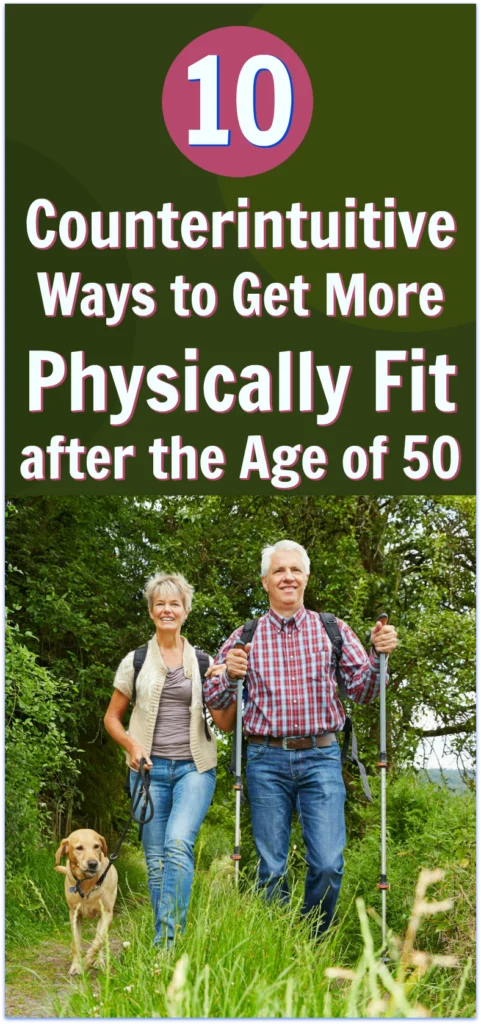
Additional Sources about Becoming Physically Fit
New Hand-Washing Habits – http://visual.ly/hand-washing-101
X’ers and Boomers at Risk for Dehydration – http://www.h4hinitiative.com/book/print/63
Sprouting Chart – http://www.blytheraw.com/sprouting-chart
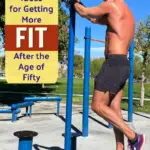
Leg Day: A Lower-Body, Functional-Training Workout • Over Fifty and Fit
Saturday 4th of January 2020
[…] the entire sole of your foot making contact the ground. Don’t use your lower back to lift. Instead, initiate the movement […]
10 Counterintuitive Ways to Become More Physically Fit After Age 50 – Normal weight – Good health
Friday 21st of June 2019
[…] 10 Counterintuitive Ways to Become More Physically Fit After Age 50 […]
Man Up with a Green Smoothie • Over Fifty and Fit
Wednesday 13th of March 2019
[…] Smart Strategies to Reduce Risk of Accelerated Aging in Men20K Total Shares10 Counterintuitive Ways to Become More Physically Fit After Age 5015K Total Shares10 Health Protocols that Will Help You Look Better Naked14K Total […]
Chest Workout – 11 Resistance-Training Movements to Develop Your Pec Muscles
Saturday 2nd of March 2019
[…] you’ve been sitting all day, or if you’re over the age of 50 like me, you might need a little extra warm-up. I do a light 1-minute jog at the end of the first […]
11 Mobility Maneuvers to Help Keep Your Joints Supple
Wednesday 13th of February 2019
[…] side, with hands in a prayer position and arms straight. Keeping your legs and hips still, simply rotate your spine so that your top arm circles up and over, resting your hand on the other side of your torso. Your […]